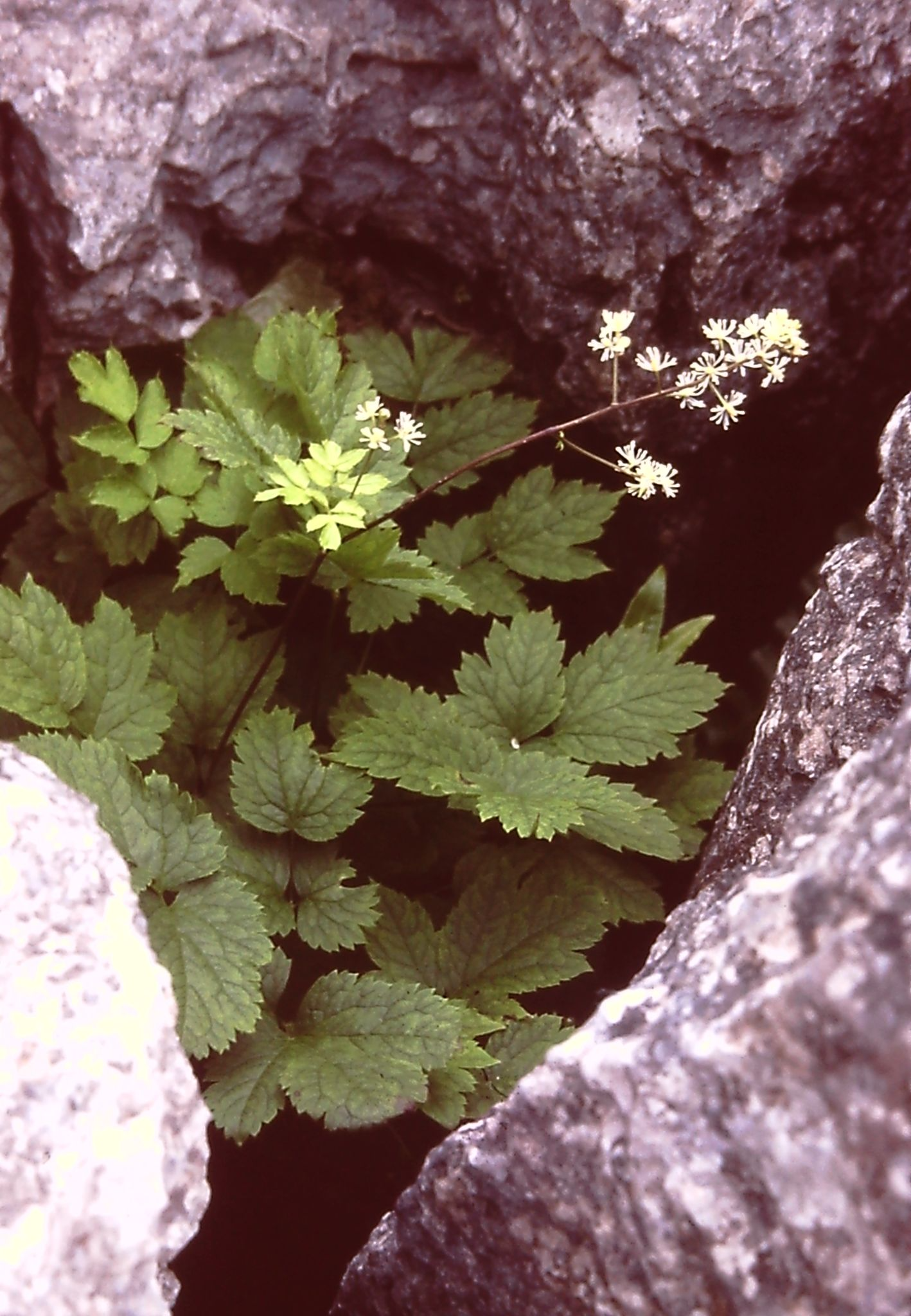#97 Baneberry by David Knight
Meet David Knight, trustee of the Garganey Trust and retired Natural England manager!
Born in Norfolk and brought up in Surrey, David moved to Yorkshire in the late 1980s. He worked in nature conservation for nearly 40 years before recently retiring from Natural England. His career began working for local authorities in South then West Yorkshire, including fifteen years with Leeds City Council. He also managed West Yorkshire Ecology before moving to a national role for urban nature conservation with English Nature. In recent years David was a manager in Natural England’s Yorkshire and Northern Lincolnshire Team and later held a national role on climate change. David is a trustee of the Garganey Trust, a nature conservation charity which manages several nature reserves including Broomhill Flash near Barnsley. He can be contacted by email at thecolumbarium@gmail.com.
Baneberry flowering in a limestone gryke.
David’s chosen species is Baneberry (Actaea spicata) which he first encountered whilst working for Leeds City Council. The ecology of the eastern side of the Leeds district reflects the underlying magnesian limestone which runs north-south from Thornborough near Ripon to the outskirts of Nottingham. Baneberry is one of a number of enigmatic plant species locally characteristic of the magnesian limestone. These include Thistle Broomrape (#47 Orobanche reticulata), Pasqueflower (Pulsatilla vulgaris) and the locally extinct Burnt Orchid (Neotinea ustulata). Easily overlooked, Baneberry is a rare perennial herb of potent toxicity at home in the deep fissures of upland limestone and base-rich lowland woods across Yorkshire.
Baneberry belongs to the Ranunculaceae family, a group that includes buttercups and hellebores. Its scientific name is Actaea spicata L., but it has been known by a host of more evocative common names over the centuries. 'Herb Christopher' is a traditional name, while 'bugbane' hints at its insect-repelling properties. In Norway it is troldbaer, the troll’s berry, and other names include Hexenkraut (witch’s plant), Teufelsbeer (devil’s berry) and raisin du diable (Grigson p33). As with ‘Baneberry’ these derive from its highly poisonous nature - all parts of the plant, but particularly the glossy, oval berries, contain cardiogenic glycosides which can cause severe vomiting, dizziness, and cardiac arrest if ingested.
Regarding its structure, Actaea spicata is a robust yet graceful herbaceous perennial. It arises from a short, thick, dark rhizome that produces fibrous roots. The aerial stems are erect, hairless, and typically unbranched, reaching heights of 30–60 cm. Its leaves are large, divided into three main sections, each further subdivided into three oval leaflets with deeply incised, serrated margins. Creamy-white flowers appear in May. The flower spike is a dense cluster of small flowers with 3–8 white petals and 4–10 prominent stamens, giving it a fluffy appearance. After pollination, courtesy of beetles and flies, the ovary develops into a fleshy, oval-shaped berry, 10–12 mm long, that ripens from a shiny green to a glossy jet-black.
Globally, Actaea spicata has a fragmented northern and montane distribution across temperate Eurasia, from Europe into parts of Siberia and the Himalayas. In the Britain it is a rare or scarce species mainly occurring in a narrow band of localities on limestone across Yorkshire and Lancashire, particularly the Carboniferous limestone of the Yorkshire Dales such as at Hawkswick Clowder. It is known historically, and from more contemporary records, on the magnesian limestone at Thorp Arch, Boston Spa Woods and Hazel Wood (where it was first recorded by John Ray in 1670) (Lees and Seaward p127). Further east it is found on the steep, wooded slopes of Forge Valley Woods near Scarborough.
It is a true calcicole, growing best in base-rich, humus-rich soils. Its primary habitats are ashwoods on limestone scree and rocky ledges in Carboniferous limestone areas and the grykes of limestone pavements. Here, it thrives in cool, moist, semi-shaded conditions, often forming small, long-lived, clonal patches. Where its leaves grow above the surrounding rock in open limestone pavements they are readily scorched by sun and wind. It seems to be a poor competitor, crowded out by more vigorous plants like brambles or nettles, making it dependent on stable, undisturbed woodland environments.
Ripe Baneberries
Seed dispersal in Actaea spicata is a somewhat unresolved ecological puzzle. While its berries suggest adaptation for endozoochory (dispersal from being eaten by and passing through an animal), their toxicity to mammals significantly limits this means of spreading. The effect of the plant’s toxins on birds is unclear—some may be able to consume the berries and disperse seeds, but is this sufficient? A more effective mechanism may be gravity: growing on rocky slopes and scree, individual ripe berries or entire clusters can tumble downslope, leading to the establishment of new plants at a discrete distance. This would result in the small, clonal clumps commonly observed.
Like Bird’s-eye Primrose (#61 Primula farinosa) Baneberry’s distribution and ecology suggest it is a post-glacial relic, having established in the wake of retreating glaciers and hung-on ever since. The legal protection of limestone pavements introduced in the early 1980s has benefitted Baneberry but neglect of woodland and scrub may account for apparent losses more recently - though this may reflect more a paucity of records over the last twenty years than actual decline (Actaea spicata L. in BSBI Online Plant Atlas 2020). As for the future, climate change will add to the challenge of conserving existing populations and conservation interventions may be needed to help Baneberry disperse and establish in new sites as conditions change.
Recording and monitoring
Records of Baneberry can be submitted to your local LERC and/or the BSBI: https://bsbi.org/record-a-plant.
Further information and acknowledgements
NEYEDC would like to thank David for his time and expertise in helping to create this blog.
Grigson, Geoffrey. The Englishman's Flora. Helicon, 1996.
Lees, Frederic Arnold, and Seaward, Mark Richard David. The Flora of West Yorkshire: With a Sketch of the Climatology and Lithology in Connection Therewith. EP Publishing, 1978.



